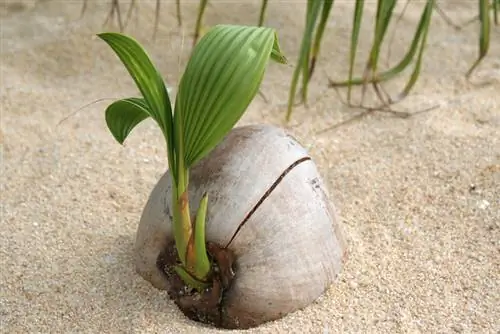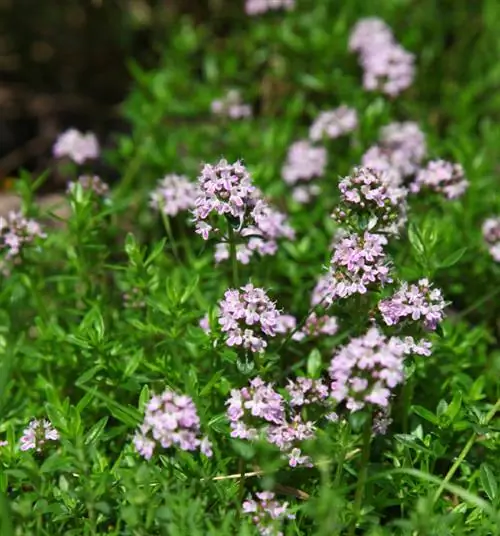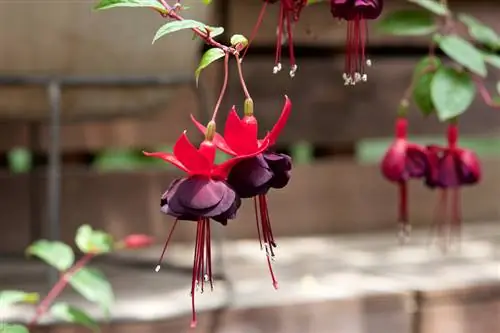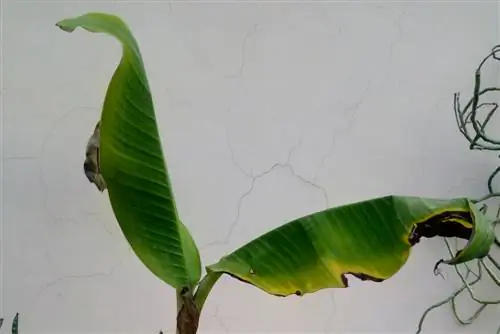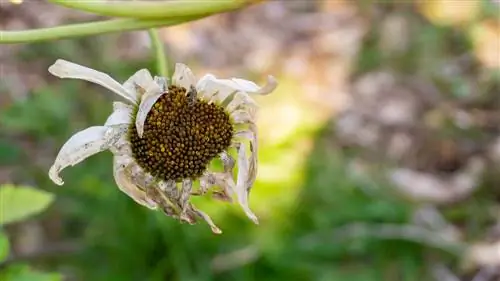- Author admin [email protected].
- Public 2023-12-16 16:46.
- Last modified 2025-01-23 11:20.
The diversity of the palm family means that the palm seeds also look very different. Almost every shape is represented, from large round to elongated to very small seeds. The germination time of the individual varieties also differs greatly. If you collected seeds on vacation or have seeds left over in the kitchen, it would be a nice experience to grow your own Mediterranean plants from them.
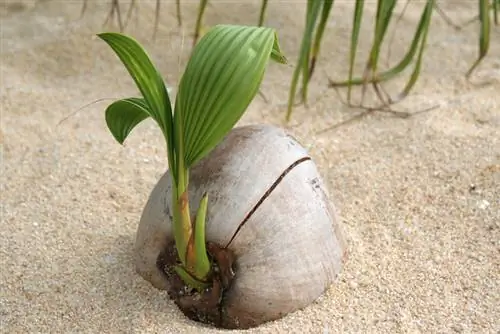
How to grow palm trees from seeds?
To grow palm trees from seeds yourself, you should use fresh seeds, remove the pulp from them and place them in water. Then place the seeds in a moist substrate such as coconut humus, spring soil or perlite, store them in a plastic bag or seed pot and keep them at a temperature between 22 and 28 degrees Celsius.
We cover in this article:
- With the appearance and texture of the fruit,
- why palm trees can only be propagated from seeds
- and how to do this.
The appearance of the fruits
Palm fruits are extremely diverse and reach a wide variety of sizes. The Seychelles nut, with a diameter of half a meter and a weight of thirty kilograms, is one of the heaviest fruits on earth. Others, however, only weigh a few grams and look like small specks of dust. The surface can be smooth and shiny or, like the coconut palm, covered in long fibers. The coloring is also not uniform and ranges from yellow and red to gray and brown to deep black.
Drupe or berry?
Drupes are found as well as berries. The coconut is a stone fruit that is similar in structure to a cherry. It is surrounded by a smooth skin, the exocarp. Among them there is fibrous plant tissue (mesocarp). The coconut fibers are obtained from this and can be spun into very stable yarns. The mesocarp surrounds the tasty, hard core, the endocarp. The seed is enclosed in this. There are three points on the side, the germ holes. Growing out of one of these, the fallen nut finds good conditions and at some point the germ emerges.
Berries, on the other hand, have a soft endocrap that is firmly attached to the seed. Their pulp is also edible in some cases. A good example of this is the date palm.
The germination time
Palm trees are mainly propagated by seeds, as only a few species form lateral offshoots. Division like other plants is also not possible due to their growth habit.
The germination time varies greatly from species to species. For some species it only lasts about two weeks, other varieties take up to three years until the seeds finally sprout.
Palms are monocot plants
When the seeds sprout, another characteristic of the palm trees becomes visible. Only a single cotyledon is formed in the palm seed and not, as with many other plants, a pair of leaves.
Grow palm trees yourself
The best germination success is achieved with fresh seeds, for example a date seed. Alternatively, you can get germinable seeds (€4.00 on Amazon) from specialist plant shops. With a little patience and willingness to experiment, you can grow a wide variety of palm tree species yourself.
Growing in a germination bag
This method has proven to be very popular with palm tree lovers because the consistent conditions mean that the seeds sprout relatively reliably. Proceed as follows:
- Remove the pulp from the seeds and place them in water for two to three days.
- Soak cocohum, spring soil or perlite well with water and let stand for a few hours.
- Express something, because too much moisture leads to rot, even in these germ-free soils.
- Put the substrate in a bag or plastic container and place palm seeds on top.
- Close well and place in a place where the temperature is between 22 and 28 degrees Celsius.
- It can accelerate germination if you simulate the natural day and night temperature fluctuations. For example, place the bag on a warm, sunny windowsill during the day and in a cool room at night.
Now a lot of patience is required, because palm seeds like to take their time germinating. In addition, all seeds rarely germinate at the same time. If a seedling with a root appears, remove it from the container and place it in a tall, narrow plant pot. Here the taproot can develop optimally.
Growing in pots
If you want to germinate a coconut, for example, the plastic bag method is not suitable. The following approach has proven successful here:
- Fill the flowerpot appropriate to the size of the seed with coconut humus or coconut spring soil and moisten well.
- Put in palm seeds and cover with the substrate about a centimeter thick.
- Coconuts are placed about half in substrate.
- Cover with a hood or bag (greenhouse climate).
- Water regularly and ventilate occasionally.
- As soon as the cotyledon becomes visible, make sure that it remains in the moist soil.
- It is only repotted when the root tips appear at the drainage hole of the cultivation container.
Tip
In 1963, two thousand year old date palm seeds were found during excavations in Israel. In 2005 one of these seeds was able to germinate. This palm, which now stands in the Negev desert, is called the Judean date palm and is considered to be the plant that could be grown from the oldest seed.

